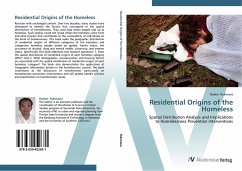This text is primarily concerned with the meanings that are produced when women become visible amongst the homeless through photographic representations. While there have always been homeless women, unlike their male counterparts, they have remained largely invisible to the public and government policy- makers. Social documentary photography has acted as one of the main avenues through which homeless women have, literally, been rendered visible. As an evidence producing technology, photography has exercised considerable influence in the construction of meaning about homelessness by employing concepts of the feminine and the masculine in various, and oppositional ways. Driven by, and implicated in complex sociocultural and political circumstances, socially concerned photographs draw on the real and the fictional to generate truth/power effects. Thus, this inquiry re/traces the representation of 'homeless woman' in a range of visual texts and ask how this construct has been discursively produced and deployed.
Bitte wählen Sie Ihr Anliegen aus.
Rechnungen
Retourenschein anfordern
Bestellstatus
Storno








